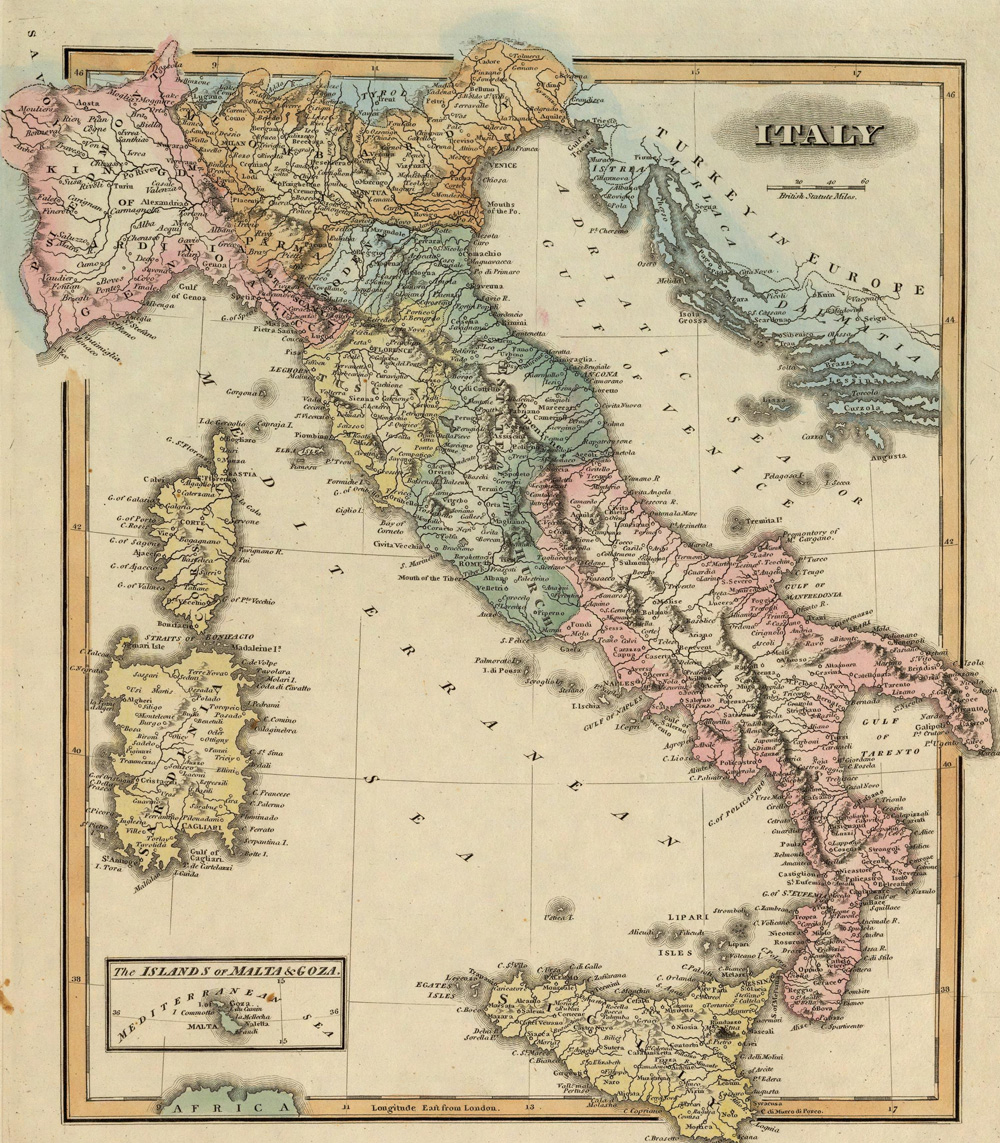Sign up for the Family Tree Newsletter Plus, you’ll receive our 10 Essential Genealogy Research Forms PDF as a special thank you!
Get Your Free Genealogy Forms
"*" indicates required fields

Birth Records
Q: I’m trying to obtain a certified birth record from Italy. What can I do?
A: Many Italian birth, marriage and death records have been microfilmed and are available at the Family History Library in Salt Lake City. But if you’re after a certified copy, say, to apply for dual citizenship or for some other reason, the record needs to come directly from Italy.
Birth, marriage and death records are kept at the town level, so you’ll need to know the name of the town where your ancestor was born and his or her Italian name (many immigrants changed their names once in America).
Write to the town’s civil record office (Ufficio di Stato Civile). You’ll find tips for writing letters to Italy in Lynn Nelson’s A Genealogist’s Guide to Discovering Your Italian Ancestors (Betterway Books, out of print). The website of Italy’s Washington, DC, embassy also has advice.
Along with your request, send an unstamped, self-addressed envelope and an international money order (send the equivalent of 10 euros for a certified record). Then be prepared to wait—a response can take weeks or months. If you send a follow-up letter and still don’t hear anything, it’s possible your correspondence never arrived. Some say Italy has one of the worst postal systems in the world. If your letter was in English, it’s possible no one could read it.
If all else fails, you can hire a researcher in Italy to obtain the document for you. Odds are the researcher won’t live in that specific town, so you’ll need to pay travel costs and the researcher’s hourly fee, as well as the cost of the record. Or try a research firm that specializes in acquiring certified copies of vital records for Italian citizenship; many charge a flat fee for their services. Do a Google search for Italian citizenship to find one.
Answer provided by Sharon DeBartolo Carmack
From the July 2009 issue of Family Tree Magazine.
Military Records
Q: My grandfather was in the Italian cavalry. Was military service compulsory in Italy? How do I obtain his military records?
A: Happily for genealogists (if not necessarily for young Italian men), in 1865 Italy instituted conscription of all males at the age of 18. Even disabled men had to report to the draft board for a physical exam, so these records encompass every native Italian male born from about 1850 to the present, except those who emigrated before age 18. These conscription records (registro di leva) and discharge records (foglio di congedo illimitato) contain rich genealogical finds, ranging from birth data and parents’ names to physical descriptions. If you don’t know the exact locality where your ancestor lived—a must for most Italian research, such as in church records—military records can provide this essential information, because the records are grouped by military district and province rather than by town.
Other Italian military records include the “draftee curriculum of service record” (registro dei fogli matricolari) and service records (registro di ruolo), both of which contain details of the soldier’s actual service, such as promotions. These military records may date as far back as 1792.
Military records become available to the public after 75 years at the provincial archive covering the place your ancestor lived; each province included two or three military districts. For addresses and other information about Italy’s provincial archives, check this FamilySearch Wiki.
If a trip to Italy is not in your immediate plans, you’ll be glad to know the Family History Library has microfilmed a dozen provinces’ military records. To check the catalog on FamilySearch, look for the name of your ancestor’s province and then scroll to Military Records. More provinces’ digitized records are being added to the FamilySearch.org website.
Answer provided by David Fryxell
From the July/August 2012 issue of Family Tree Magazine.
Q: My Italian grandfather served in World War I and was a prisoner of war of the Austrians. Where would I find information on this? I am assuming I would write to Lucca, Italy.
A: You can get the conscription papers for your ancestor from Italy. Trafford Cole’s book Italian Genealogical Records states that the conscription records are called registro di leva and list all males by year of birth within each military district. He goes on to say that the records are usually indexed and fairly easy to consult: “There are two copies of them; one is held in the military district, and the other copy is initially held by the procura della repubblica, usually at the court (tribunal) archive. After 75 years, the latter copy is usually turned over to the state archive and made available for consultation.”
Cole goes on to describe how the military districts are divided. He also includes several examples of some of the documents.
The second type of military record is the registri dei fogli matricolare (record of draftee curriculum), which documents the individual’s military service. In a separate document (sometimes they are included in the foglio matricolare) called the registro di ruolo (military record), other documents may be found.
The Family History Library has microfilmed a handful of military records from Italy. To find them, go to the FamilySearch online catalog and run a place search of the province (such as Italy, Torino), then look for a Military Records heading. FamilySearch has conscription records for a couple of comunes in Italy. Find the databases listed among FamilySearch’s growing collection of Italian records.
But you’ll most likely need to write to the Italian state archive (Archivo di Stato) where your ancestor lived.
My recommendation would be to read Cole’s chapter on military records. I find no mention of where prisoner of war records would, if at all, be included. I would think they would be in the registri dei fogli matricolare or the registro di ruolo since this is the most logical place for them.
You’ll find additional help researching your Italian family tree in John Philip Colletta’s book Finding Italian Roots (Genealogical Publishing Co.).
Answer provided by Marcia Melnyk
Q: While visiting a family hometown in Italy, I found my great-uncle Angelo Fossa on a monument for soldiers killed in World War I. I requested his military records from the provincial office and from Rome, but he wasn’t listed. Where do I go from here?
A: When Italian unification was completed in 1870, all 18-year-old men were subject to mandatory conscription. Each town (comune) maintains a record of locals who served in the military, so the easiest way to get a post-1870 record is from your uncle’s town government (municipio). But if the record no longer exists, or if officials prove unhelpful, you have two alternatives:
- For military service prior to World War I, contact the state archives (archivio di stato) in the capital of the province where your ancestor lived. State archives have custody of older military records, some of which predate unification by a century. Visit www.archivi.beniculturali.it for state archives’ addresses.
- For service since World War I, contact the military district (distrctto militare) for your uncle’s town. Some libraries have gazetteers— such as the Nuovo Dizionario dei Comut e Fraziom di Comtmi— that name each town’s military district. (Typically, a province contains five or six military districts.)
Since 1870, each military district has kept Office of Conscription registers (registri degli Uffici di Leva) listing the town of birth, birth date, parents’ names, physical description and military status (called up, deserted, exempted and so forth) of men eligible for the draft. The registers are organized into annual conscription classes (classe di leva). Each class is indexed by the names of men who turned 18 since the previous class.
Once you’ve learned the facts of your great-uncle’s service, consult some history books to see what the Italian military was up to during that time, and how he may have participated.
Answer provided by John Philip Colletta
From the April 2004 issue of Family Tree Magazine.
ADVERTISEMENT




